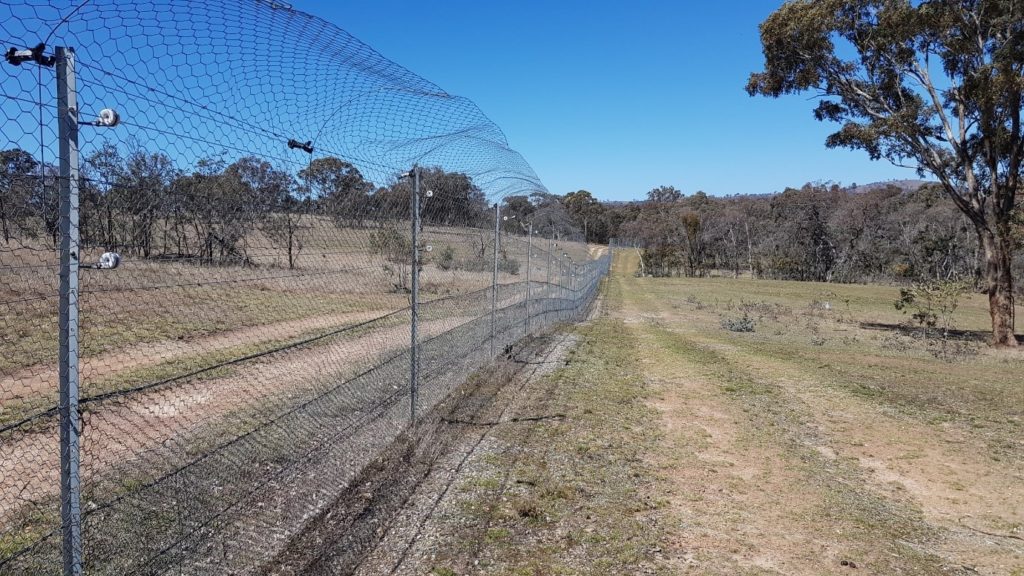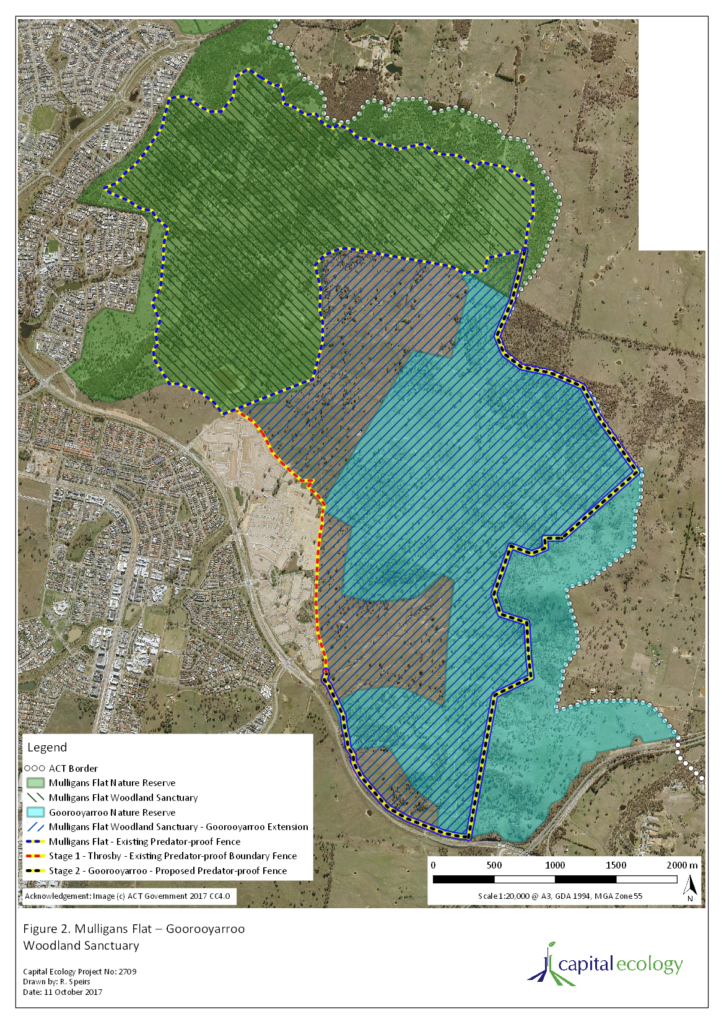
Goorooyarroo Predator-proof Fence Extension
Capital Ecology provided advice for the now completed extension to the Mulligans Flat Woodland Sanctuary predator-proof fence (PPF). The extension encapsulates much of Goorooyarroo Nature Reserve, increasing the perimeter of the fence by approximately 11 kilometers and the total enclosed area from 484 ha to 1,304 ha.
Mulligans Flat Nature Reserve and the adjoining Goorooyarroo Nature Reserve were established to provide in-perpetuity protection to the largest and most intact remaining example of the critically endangered ecological community Yellow Box–Blakely’s Red Gum Grassy Woodland (Box-Gum Woodland) in the ACT and region.These reserves also contain habitat for the threatened Golden Sun Moth Synemon plana, Striped Legless Lizard Delma impar, Superb Parrot Polytelis swainsonii, and numerous other threatened and regionally declining woodland birds. Many native fauna species have disappeared from bushland in the ACT and region, including Mulligans Flat and Goorooyarroo Nature Reserves, and it is thought that predation by cats Felis catus (both feral and domestic) and the European Red Fox Vulpes vulpes is primarily responsible for this. In addition, historic removal of standing and fallen dead timber, together with groundstorey modification and prevention of canopy regeneration from overgrazing, has had a marked impact upon native fauna habitat.
The Mulligans Flat and Goorooyarroo Nature Reserves are the site of a major research program. Commencing in 2004, the Mulligans Flat Goorooyarroo Woodland Experiment is a long-term research project of national and international importance. The research aims to provide a whole-of-ecosystem understanding of Box-Gum Woodland, particularly relating to restoring the structure and function of temperate woodlands and increasing biodiversity.
The Mulligans Flat Woodland Sanctuary was established in 2008 when the ACT Government built an 11.5 kilometre, feral animal-proof fence to enclose 484 ha and allow removal and/or control of feral animals (i.e. cats, foxes, European Rabbit Oryctolagus cuniculus, European Hares Lepus europaeus), and provide feral predator free habitat for the reintroduction of locally extinct native species (i.e. Eastern Bettong Bettongia gaimardi, Bush Stone-curlew Burhinus grallarius, New Holland Mouse Pseudomys novaehollandiae and Eastern Quoll Dasyurus viverrinus).
Capital Ecology completed an Ecological Impact Assessment (EIA), EPBC Act Referral, and an application for an Environmental Significance Opinion (ESO) for the Goorooyarroo extension of the sanctuary, to identify and assess the likely impacts of the construction of the PPF. The proposed alignment for the PPF was altered based on an initial site inspection, reducing the impacts from construction and maintenance during operation. Our assessment determined that the construction of the PPF would impact 3.14 ha of Box-Gum woodland, however this impact will be largely temporary as the groundcover is expected to regenerate and re-establish naturally. The EPBC Act referral decision and ESO both concurred with our assessment, each determining that the project would not significantly impact Box-Gum Woodland or other listed biodiversity provided prescribed controls were implemented during construction.


 Capital Ecology
Capital Ecology